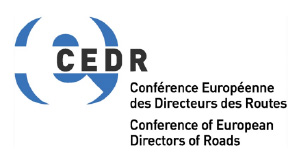The roadside infrastructure is today equipped with various devices having a relevant impact on the total amount of materials used for road construction.
In the last decades, the number of products used alongside roads has been widely increasing. At the same time, the road infrastructure accounts for extensive use of natural resources and is a major generator of waste, as well as comprises assets with a lifespan of up to 100 years. Therefore, the national road authorities decided to take a lead and encourage the proper handling of scarce materials (recycling, use of renewable and biodegradable materials).
Among road equipment’s, noise barriers and safety barriers are the most relevant ones. Hence, both have been chosen to serve as study objects of this research project, to help the national road authorities to reduce their environmental impacts and to contribute to a circular economy.
This research project aims to create two tools (an online tool and a software tool) to enable National Road Administrations to identify innovative and sustainable solutions to facilitate the transition from linear to a circular economy in the field of roadside infrastructure.
Achieving a circular economy requires minimising the demand for primary resources and reutilizing resources in high-value applications. National Road Administrations need a wider range of material options to change from linear to circular economy. At the same time, high functional demand and technical performance requirements still need to be met (e.g., safety, acoustic, structural, maintenance, etc.).
New innovative and sustainable options could be bio-based, renewable resources (such as wood or composites with natural fibres) and the use of recycled/recyclable materials. Therefore, the scope of this research is to gather an overview of innovative and sustainable solutions in the roadside infrastructure sector, and more particularly, for noise and safety barriers.
In general, the assessment of the application of such solutions should be based on an environmental life cycle approach taking into consideration cradle-to-cradle impacts, including resource impacts, long-term environmental performance (maintenance) and end of life (decommissioning).
To assure a holistic life cycle engineering approach, a lean Life Cycle Cost Assessment (LCCA) will be applied. The relevant aspects that will be considered are (i) the technical requirements (e.g. safety, acoustic and structural performance), (ii) durability, (iii) maintenance, (iv) costs and (v) different functionalities.
In addition to that, security of supply, adaptability, lifespan extension options, high-value recycling/reuse options, and carbon capture capacity should also be considered.
This project is funded by the CEDR Transnational Road Research Programme Call 2020 Resource Efficiency and Circular Economy with funding provided by CEDR members of Denmark, Ireland, Netherlands, Norway, Sweden, Switzerland and the United Kingdom.



